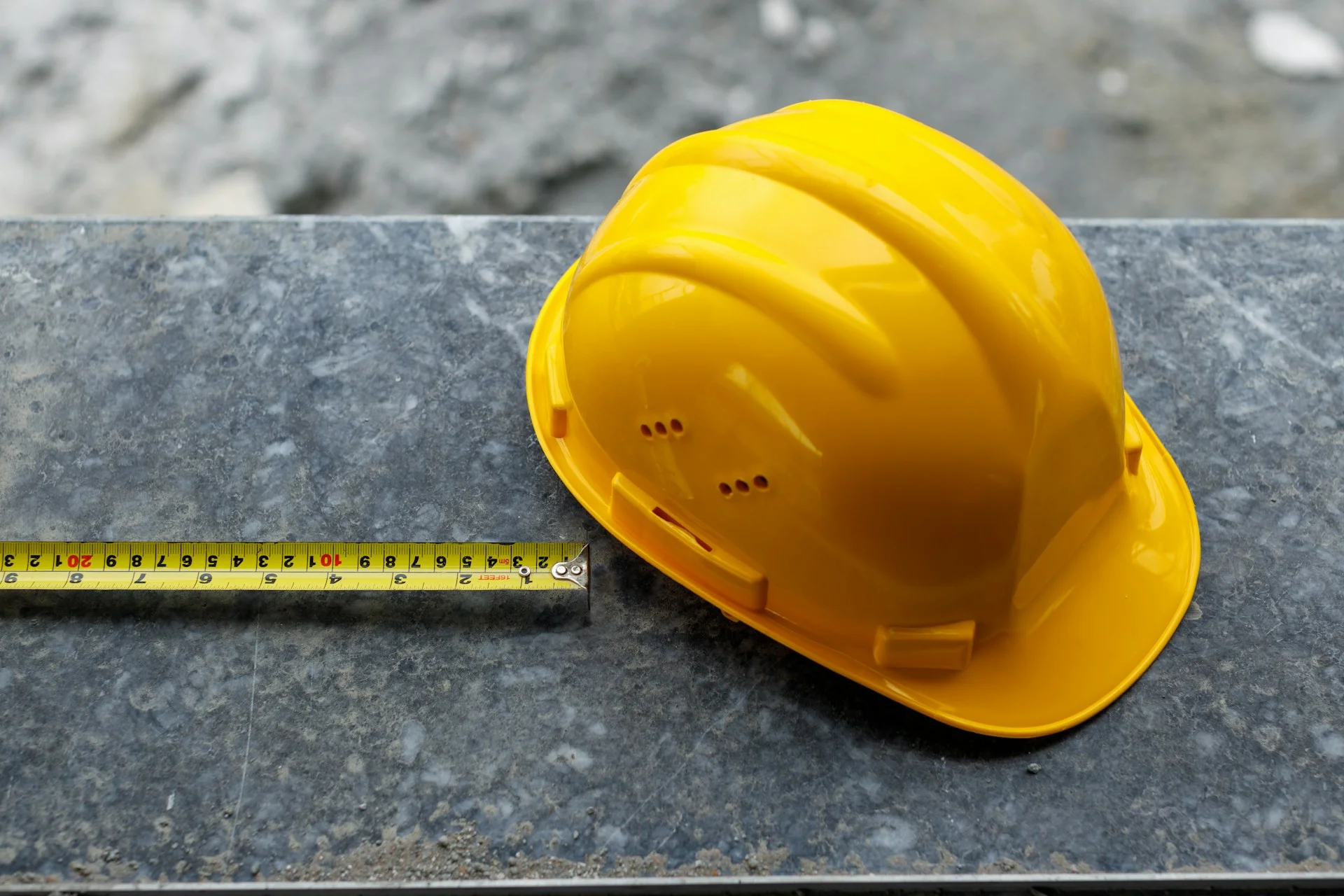
If you’re working on a job site, your hard hat isn’t just another piece of gear, it’s a literal lifesaver. But there’s a lot more to head protection than grabbing the first helmet you see. The ANSI hard hat standard is what separates proper, compliant protection from a piece of plastic that won’t hold up when it matters most.
Whether you’re in construction, manufacturing, utilities, or another field with overhead hazards, understanding this standard is key to keeping your crew safe and staying OSHA-compliant. In this guide, you’ll learn what the ANSI standard means, how to spot an ANSI certified hard hat, and the differences between type 1 vs type 2 hard hats, plus when it’s time to replace your gear.
If you’re unsure about your current head protection, contact us and we’ll help you find the right solution for your job site.
What Is the ANSI Hard Hat Standard?

The ANSI hard hat standard is set by the American National Standards Institute (ANSI) and lays out the safety and performance requirements for industrial head protection. OSHA requires that any hard hat used in the U.S. must meet the ANSI Z89.1 standard, or prove it offers equal or better protection.
This means every ANSI-compliant helmet must be able to handle real-world hazards like falling or flying objects, accidental bumps into stationary structures, electrical contact (for certain classes), and exposure to weather.
For the most up-to-date editions of the standard, you can visit the official ANSI webstore.
The ANSI Standard for Hard Hats: What It Covers
The ANSI standard for hard hats covers four major areas of protection and performance:
Impact Resistance
Helmets must absorb and reduce force from falling or moving objects.
Penetration Resistance
No sharp object should puncture the helmet shell under standard test conditions.
Electrical Protection
For certain helmet classes, protection against specific voltage levels is required.
Durability
Helmets must remain functional after exposure to rain, sunlight, fire, or other environmental conditions.
Every manufacturer submits their helmets for independent testing before they’re approved for ANSI labeling.
Spotting an ANSI Certified Hard Hat

If you want to confirm a helmet is ANSI-approved, check inside the shell. A ansi certified hard hat will have permanent markings that include:
- Manufacturer name
- ANSI Z89.1 edition year (e.g., 2014 or newer)
- ANSI type (I or II) and class (G, E, or C)
- Size range and date of manufacture
- Any optional ratings like “HV” for high visibility or “LT” for low temperature
If the label is missing, unreadable, or outdated, it’s time to consider replacing the helmet.
Type 1 vs Type 2 Hard Hats
The difference between type 1 vs type 2 hard hats comes down to the kind of impact protection they offer.
Type I Hard Hats
These protect from impacts directly to the top of the head. They’re common in the U.S. and well-suited for vertical impact hazards like falling tools.
Type II Hard Hats
These protect from both top and side impacts. They’re often required in industries where workers are exposed to moving equipment or falling debris from multiple angles.
For a deeper comparison, see Type I and Type II hard hats explained.
When a ANSI Type 1 Hard Hat Is Enough
An ANSI type 1 hard hat is a good choice if your main risk is vertical impact, such as tools or debris falling from above. They’re lighter, often more comfortable, and still meet OSHA’s requirements for many industries.
However, if your work environment has risks from the side, like swinging loads or vehicles moving nearby, it’s worth upgrading to Type II for added protection.
Hard Hat Classes Under ANSI Standards

In addition to type, the ANSI standards for hard hats also assign a class based on electrical protection:
Class G – General
Provides limited electrical protection up to 2,200 volts, suitable for most construction environments.
Class E – Electrical
Offers high-voltage protection up to 20,000 volts for work around live wires or electrical systems.
Class C – Conductive
Provides no electrical protection but may have better ventilation or lighter weight for comfort.
For style and function differences, see safety helmet vs hard hat.
OSHA’s Role in Hard Hat Requirements
OSHA regulations (29 CFR 1910.135 and 1926.100) require that employers provide ANSI-compliant helmets, or equivalent protection.
If your gear doesn’t meet the ANSI hard hat standard, you risk fines and citations. You can read more in our new OSHA hard hats update.
When to Replace Your Hard Hat
A helmet is only as good as its condition. If the outer shell shows cracks, dents, or deep scratches, it’s no longer safe to use. Even small imperfections can weaken the material and reduce its impact resistance.
The suspension system is just as important. If it’s frayed, stretched, or broken, the helmet won’t absorb force the way it’s designed to, and it should be replaced immediately.
Check the inside for the ANSI label. If the label is missing or worn to the point where it can’t be read, you can’t confirm compliance, and that’s a sign it’s time for a new helmet.
Any hard hat that’s taken a hit during use, even if it looks fine, should be replaced right away. Internal damage isn’t always visible but can compromise safety.
Most manufacturers recommend replacing the shell every five years and the suspension every year. Harsh exposure to direct sunlight, extreme temperatures, or chemicals can shorten that lifespan.
Hard Hat Colors and Workplace Safety
Color coding is more than just a style choice, it can quickly identify roles on a job site. Supervisors might wear white, safety officers green, and general laborers yellow. For more, check our Hard Hat Colors and Their Meaning guide.
Choosing the Right Hard Hat for the Job
To find the right ANSI-compliant helmet, consider:
- Impact Risk – Top only (Type I) or top and side (Type II)
- Electrical Hazards – Class G, E, or C
- Environmental Conditions – Temperature extremes, visibility needs
- Comfort and Fit – Especially for long shifts
TPR Industrial offers a full range of OSHA- and ANSI-compliant head protection. Explore options at TPR Industrial or talk to our team.
ANSI Hard Hat Standard Explained
The ANSI hard hat standard exists for one reason: to keep workers safe in hazardous environments. From choosing between type 1 vs type 2 hard hats to understanding classes and replacement timelines, the right helmet can make all the difference in preventing injuries.
If you’re due for an upgrade or want to ensure compliance, TPR Industrial has the equipment and expertise to get your crew protected.
FAQs About ANSI Hard Hat Standard
What does the ANSI hard hat standard include?
It outlines performance and testing requirements for impact, penetration, electrical protection, durability, and proper labeling.
How can I tell if my hard hat is ANSI certified?
Look inside the shell for the ANSI Z89.1 marking, type, class, manufacturer, and date of manufacture.
What’s the difference between Type I and Type II hard hats?
Type I protects from top impacts only; Type II protects from top and side impacts.
Does OSHA require ANSI-compliant helmets?
Yes, OSHA requires head protection meeting ANSI Z89.1 or equal/better protection.
How often should a hard hat be replaced?
Most shells are replaced every 5 years and suspensions every year, or immediately after damage.
FAQs About TPR Industrial
Does TPR Industrial sell ANSI certified hard hats?
Yes, our helmets meet or exceed ANSI Z89.1 and OSHA standards.
Can TPR Industrial help me choose the right helmet?
Absolutely. We’ll match you with the right type, class, and features for your specific hazards.
Does TPR Industrial offer bulk orders?
Yes, we supply safety helmets for crews of all sizes, with customization options available.
Where can I learn more about safety standards?
Visit TPR Industrial for more safety resources and product info.
 English
English Español
Español
